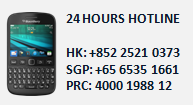Nickel ore liquefaction problems
Unprocessed nickel ore with relatively low nickel content has been shipped for many years from Indonesia and the Philippines on relatively short voyages to Australia and Japan.
However, the recent high price of nickel ore has made the carriage of this ore economically viable on significantly longer ocean passages. But the extended passage times have revealed its dangerous propensity to liquefy and several vessels have experienced serious stability problems as a result.
Essentially, the ore is mined, stored in open stockpiles and then shipped. The unprocessed ore is not homogeneous in form, and wide ranges of particle size are common within a single shipment. Commonly, the ore presented for shipment has a high proportion of very fine claylike particles and a moisture content of up to thirty-forty per cent by mass. As with many finely particulate materials, this ore can liquefy and shift if the moisture level is too great.
The IMO Bulk Code requires shippers to provide the carrier with appropriate certification of the consignment's Transportable Moisture Limit (TML) and actual moisture content. If the moisture content is below the TML, the material is deemed safe for carriage. In order to establish the TML, the Flow Moisture Point (FMP) of the consignment must first be measured. A significant problem with testing the unprocessed ore for the FMP is that taking representative samples is made very difficult by the lack of homogeneity. In a recent case, different laboratories obtained widely differing results on samples supposedly representing the same cargo.
A further complication is that rainfall on the open stockpiles can increase the actual moisture content after samples are taken. The difficulty in establishing its safety for shipment is such that shipowners should exercise great caution if asked to load this cargo.





